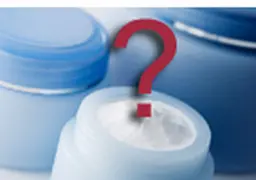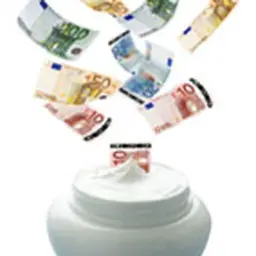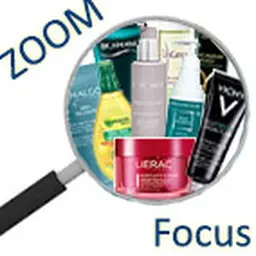
Both lightening and… tanning (!), anti-inflammatory, soothing and antioxidant, this plant extract possesses, depending on its dosage and the active fractions sought, the ertonnante faculty to treat the spots of hyperpigmentation, like… to stimulate the synthesis of melanin or to fight against the cutaneous hypersensitivity. It is found in many new cosmetic products this summer as in the fall. Exploration of this variable-geometry asset that we haven't finished going around!
If it is exciting to decipher, licorice root extract is a real Chinese puzzle! Molecules with similar names (Glycyrrhiza glabra, Glycyrrhiza inflata, Dipotassium glycyrrhizate, Glycyrrhetinic acid…), mostly derived from its major component glycyrrhizine. However, they offer very different, even opposite properties! If most of the time, liquorice root extract is anti-inflammatory, soothing and antioxidant, it possesses (to make simple) two active principles very sought after by the cosmetic industry: glabridine (INCI : Glycyrrhiza glabra root extract ) which inhibits melanin (hence its anti-stain properties) and glycyrrhetinic acid (name INCI : Glycyrrhetinic acid ) which, depending on its concentration, can stimulate it! That's enough to lose your Latin. According to Nivea, who has just filed a patent on the"pro-melanin" role of glycyrrhetinic acid," everything is a question of dosage and also of extraction method, a method which can privilege the extraction of one molecule rather than another. The various scientific publications on which we rely demonstrate that glycyrrhetinic acid can inhibit the growth of melanocytes such as stimulate melanogenesis ".
Glabridine or licorice, a reference lightening agent
Celebrated by traditional Chinese medicine as by Western dermatologists, glabridine, lipophilic extract of liquorice root, is known for its anti-stain, lightening and anti-irritating properties. " It inhibits the tyrosinase that causes melanin production. It also has excellent antioxidant and anti-inflammatory properties and helps reduce redness, which is important to improve the appearance of hyperpigmentation spots, including post-inflammatory "says Isabelle Benoit, Director of Scientific Communication at Esthederm. The brand has long used it in its Hypopigmentaline patent, present in the White System range, as the Lightening Serum (30 ml, 79 €).
Glabridine is also found in in Bioderma's new sun care product against hyperpigmentation such as pregnancy mask (Photoderm M SPF 50+, Very high protection tinted cream, 40 ml, 14.50 €), or at Etat Pur which considers that ". glabridine inhibits melanogenesis better than kojic acid "(Pure Glabridine Active, 15 ml, €17.20). Or in global anti-ageing care (integrating an anti-stain action therefore), such as the Ekia Radiance Serum Certified organic (30 ml, 68 €), or the new Lumière Sublime de Cinq Mondes Serum (30 ml, 95 €, range Rituels de Kyoto, Japan). According to Cinq Mondes and a test conducted by its supplier," glabridine is 100 times more effective than vitamin C at fighting pigmentation spots ". Vichy uses glycyrrhizic acid (INCI : Dipotassium glycyrrhizate ) with similar effects (it evens out the complexion and calms the skin) in Idealalia Skin Sleep Night Repair Balm Gel (50 ml, 31 €).
But glabridine can be found in all kinds of products, such as foundations that it enriches with its"care" qualities (Dermo Caviar foundation from La Prairie, 30 ml, 188 €, from October 5), or facial scrubs or cleansers whose lightening virtues it reinforces, while calming irritation and redness, as in the entire 123 Détox range from Erborian ( Solid Cleansing Oil 100 ml, 33 €, Cleansing Cream with 7 Herbs, 50 ml, 27 €, Scrub Cream with 7 Herbs 50 ml, 25 €), or Osmoclean, Clarifying Gum Mask, an exfoliating treatment without Esthederm grain (75 ml, 34 €), or Supercleanse, Glamglow Daily Cleansing Care (150 g, 29.90 €, from mid-August).
Glycyrrhetinic acid, a traditionally soothing active…
Widely described in the treatises of herbal medicine, this other active fraction of licorice root extract, also called enoxolone, is known for its anti-inflammatory virtues. Soothing and anti-irritating, it calms skin hypersensitivity, sunburn or insect bites and reduces redness in Pure Enoxolone Pure State Active (15 ml, 14 €). It is also found, but in a different form, in Esthederm's new sun oils for body and hair (L'Huile Solaire Protection Active Jeunesse, Bronzing Sublimatrix, Normal or Strong Sun 150 ml, 49 €). " We use 18 beta glycyrrhetinic acid in our sun and after-sun products as a soothing active ingredient: it protects against UV-induced inflammation by stimulating endogenous anti-inflammatory mechanisms. In particular, it maintains cortisol (an anti-inflammatory naturally present in the skin) in its active form and reduces the production of pro-inflammatory cytokines, offering a direct anti-inflammatory action. This effectiveness is essential because inflammatory phenomena are largely involved in photo-aging and hyperpigmentation. However, 18 beta glycyrrhetinic acid is not soluble in oil, which is why we had to use a lipophilic precursor (stearyl glycyrrhetinate) in our new sun oils, continues Isabelle Benoit. The Beiersdorf group also likes the liquorice extract found in two of its suncare lines (Eucerin and Nivea Sun). Eucerin uses an antioxidant active ingredient called Licochalcone A, derived from Chinese licorice root (INCI : Glycyrrhiza inflata root extract). It is combined with glycyrrhetinic acid which stimulates the DNA self-repair mechanisms (demonstrated action in vitro by fluorescence and in vivo on 14 volunteers after twice-daily use for nine days). The two molecules are combined in the brand's new sun care products for acne-prone skin: Oil Control Sun Gel Touch Cream Dry SPF 30 (50 ml, 10 €) or SPF 50 (50 ml, 10,50 €).
… that recently reveals tanning virtues!
Summer 2015, a twist with Nivea Sun which uses a glycyrrhetinic acid tanning in its sunglasses ( Protect & Bronze Tan Activating Dry Oil SPF 30 200 ml, 7,60 €) ! Renamed Pro-Melanin, it does activate the skin's natural tanning process. As we have seen, glycyrrhetinic acid is not soluble in oil and little in water. This is why Nivea uses its salts (especially calcium and potassium) which are more soluble in water than glycyrrhetinic acid alone. And yet, it will not have escaped you that it is a solar oil! Yes, it has the feel and slip of an oil, but without any oil (neither mineral nor vegetable), its excipient is essentially composed of alcohol (first ingredient in the list of ingredients INCI for dry oil), or a mixture of water and alcohol (for after-sun). A bad point for the most sold sunglasses in the world…
Ariane Le Febvre





